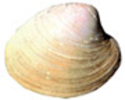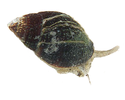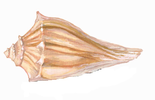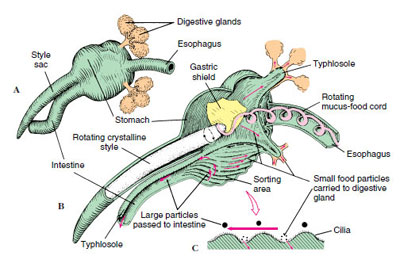
Shellfish found in and around Barnegat Bay
Mollusks
Bivalves
Phylum mullusca Class bivalvia
A mollusk, such as an oyster or a clam, that has a shell consisting of two hinged valves
Species that live buried in mud or sand and have valves (the two pieces of the shell) of equal size. Clams burrow by means of a muscular foot and are filter feeders who draw in bay water which contain food and oxygen.
Oysters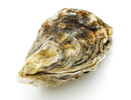
Species which attach to rocks, pebbles or shells in colonies called beds or reefs. Oysters have two shells which are generally grey in color. The shells are usually oval or pear-shaped, but vary widely in form depending on what they attach to.
Mussels![]()
Species that have a smooth, bluish-black shell often grow in clumps, attaching themselves to rocks or to each other by means of sticky filaments, sometimes referred to as a “beard”.
Scallops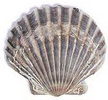
Species that have shells which are ribbed and possess a distinctive wing-like hinge. Adults can swim by rapidly closing their shells and forcing water out of the unhinged side of the paired shells and propels them forward.
Arthropods
Crustaceans
Phylum anthropoda Subphylum crusacea
Aquatic arthropods usually having a segmented body and chitinous (tough, protective, semitransparent) exoskeleton.
Lobsters
Species are ten-legged crustaceans closely related to shrimp and crabs. They are bottom-dwelling, creatures found in all of the world’s oceans, as well as brackish environments.
Shrimp![]()
Species of small marine crustaceans with 10 jointed legs on the thorax, well-developed swimmerets on the abdominal segments, and a body that is compressed laterally.
Shrimp differ from their close relatives, the lobsters and crabs, in that they are primarily swimmers rather than crawlers
Barnacles
Species are crustaceans that have jointed legs and shells of connected overlapping plates. Instead of crawling after food, they glue themselves to rocks, ships, pillings, even whales and wait for food to wash by.
Mollusks
Gastropods
Phylum mullusca Class gastrapodia
A Mollusk having a single, usually coiled shell or no shell, a ventral muscular foot and eyes and feelers located on a distinct head
Slugs![]()
Species are marine gastropods that lacks a shell as an adult and is usually brightly colored. Sea slugs and Nudibranchs, creep along the bottom or cling to submerged vegetation, usually in water just below the low tide line.
